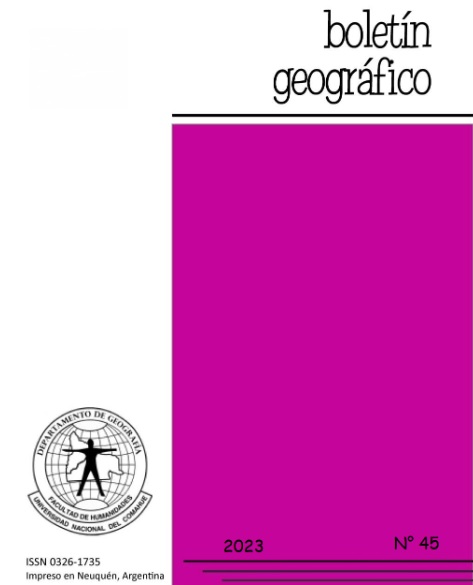Análisis del potencial de las energías renovables en el eje geográfico Asia-Europa
Palabras clave:
Energías renovables, Política energética, Eje geográfico, Acceso a la energía, Desarrollo social y económicoResumen
La limitación de las fuentes de energía convencionales, por un lado, y la preocupación por el medio ambiente, por otro, han llevado a los países a promover cada vez más las tecnologías de energías renovables. Los instrumentos de política energética desempeñan un papel crucial en la aplicación de la innovación y la reducción de costes en la producción de energías renovables. Los distintos países aplican diversas políticas para promover las tecnologías de energías renovables, como subvenciones de capital, tarifas de alimentación, certificados negociables y normas de cartera de energías renovables. Sin embargo, algunas políticas son más eficaces que otras. El análisis del potencial de energías renovables de los países avanzados y su combinación con factores autóctonos está llevando a los países en desarrollo a crear tecnologías de energías renovables en sus estructuras de suministro energético. Este documento analiza el efecto de diferentes instrumentos políticos en los sectores de las energías renovables en el eje geográfico. Analiza medidas y recomendaciones políticas que, si se tienen en cuenta, contribuyen a conseguir energías renovables, reduciendo así las emisiones, mitigando el cambio climático y proporcionando un medio ambiente y una energía limpios para todos y para las generaciones futuras. También investigó las oportunidades asociadas a las fuentes de energía renovables.
Descargas
Citas
Abbasi, T., & Abbasi, S. (2010). Renewable energy sources: Their impact on global warming and pollution. PHI Learning.
Abbasi, T., Premalatha, M., & Abbasi, S. (2011). The return to renewables: Will it help in global warming control? Renewable and Sustainable Energy Reviews, 15, 891–894. http://dx.doi.org/10.1016/j.rser.2010.09.048
Ajanovic, A. (2011). Biofuels versus food production: Does biofuel production increase food prices? Energy, 36, 2070–2076. http://dx.doi.org/10.1016/j.energy.2010.05.019
Asumadu-Sarkodie, S., & Owusu, P. A. (2016a). A review of Ghana’s energy sector national energy statistics and policy framework. Cogent Engineering, 3. doi:10.1080/23311916.2016.1155274
Asumadu-Sarkodie, S., & Owusu, P. A. (2016b). The potential and economic viability of solar photovoltaic in Ghana. Energy Sources, Part A: Recovery, Utilization, and Environmental Effects. doi:10.1080/15567036.2015.1122682
Asumadu-Sarkodie, S., & Owusu, P. A. (2016c). Carbon dioxide emissions, GDP, energy use and population growth: A multivariate and causality analysis for Ghana, 1971–2013. Environmental Science and Pollution Research International. doi:10.1007/s11356-016-6511-x
Asumadu-Sarkodie, S., Owusu, P. A., & Jayaweera, H. M. (2015). Flood risk management in Ghana: A case study in Accra. Advances in Applied Science Research, 6, 196–201
Asumadu-Sarkodie, S., Owusu, P. A., & Rufangura, P. (2015). Impact analysis of flood in Accra, Ghana. Advances in Applied Science Research , 6 , 53–78
Baños, R., Manzano-Agugliaro, F., Montoya, F., Gil, C., Alcayde, A., & Gómez, J. (2011). Optimization methods applied to renewable and sustainable energy: A review. Renewable and Sustainable Energy Reviews, 15, 1753–1766. http://dx.doi.org/10.1016/j.rser.2010.12.008
Baum, S., Weih, M., Busch, G., Kroiher, F., & Bolte, A. (2009). The impact of short rotation coppice plantations on phylodiversity. Landbauforschung – vTI Agriculture and Forestry Research, 3, 163–170.
Brew-Hammond, A. (2010). Energy access in Africa: Challenges ahead. Energy Policy, 38, 2291–2301.10.1016/j.enpol.2009.12.016
Demirbas, M. F., Balat, M., & Balat, H. (2009). The potential contribution of biomass to sustainable energy development. Energy Conversion and Management, 50, 1746–176
Edenhofer, O., Pichs-Madruga, R., Sokona, Y., Seyboth, K., Matschoss, P., Kadner, S., von Stechow, C. (2011). Renewable Energy Sources and Climate Change Mitigation. Cambridge: Cambridge University Press. http://dx.doi.org/10.1017/CBO9781139151153
EEA. (2016). Mitigating climate change, greenhouse gas emissions. Retrieved from http://www.eea. Europa.eu/sour-2015/countries-comparison/ climate-change-mitigation
Førsund, F. R. (2015). Hydropower economics (Vol. 217). New York: Springer.
Fräss-Ehrfeld, C. (2009). Renewable energy sources: A chance to combat climate change (Vol 1). Kluwer Law International.
Hák, T., Janoušková, S., & Moldan, B. (2016). Sustainable development goals: A need for relevant indicators Ecological Indicators, 60, 565–573. http://dx.doi.org/10.1016/j.ecolind.2015.08.003
Hamann, A. (2015). Coordinated predictive control of a hydropower cascade.
Headey, D. & Fan, S. (2008). Anatomy of a crisis: The causes and consequences of surging food prices. Agricultural Economics, 39, 375–391. http://dx.doi.org/10.1111/agec.2008.39.issue-s1
Hoogwijk, M., Faaij, A., Eickhout, B., de Vries, B., & Turkenburg, W. (2005). The potential of biomass energy out to 2100, for four IPCC SRES land-use scenarios. Biomass and Bioenergy, 29, 225–257. http://dx.doi.org/10.1016/j.biombioe.2005.05.002
Kaygusuz, K. (2012). Energy for sustainable development: A case of developing countries. Renewable and Sustainable Energy Reviews, 16, 1116–1126. http://dx.doi.org/10.1016/j.rser.2011.11.013
Koh, L. P., & Ghazoul, J. (2008). Biofuels, biodiversity, and people: Understanding the conflicts and finding opportunities. Biological Conservation, 141, 2450–2460. http://dx.doi.org/10.1016/j.biocon.2008.08.005
Kruyt, B., van Vuuren, D. P., de Vries, H., & Groenenberg, H. (2009). Indicators for energy security. Energy Policy, 37, 2166–2181. http://dx.doi.org/10.1016/j.enpol.2009.02.006
Larsen, H. H., Kristensen, N. B., Sønderberg Petersen, L., Kristensen H. O. H., Pedersen, A. S., Jensen, T. C., & Schramm, J. (2009, March 17-18). How do we convert the transport sector to renewable energy and improve the sector’s interplay with the energy system? Background paper for the workshop on transport-renewable energy in the transport sector and planning, Technical University of Denmark. Technical University of Denmark
Lalitha Gnanasekaran, A.K. Priya, S. Thanigaivel, Tuan K.A. Hoang, Matias Soto-Moscoso.(2022) The conversion of biomass to fuels via cutting-edge technologies: Explorations from natural utilization systems, The Science and Technology of Fuel and Energy , Volume 331 Parte 1, https://doi.org/10.1016/j.fuel.2022.125668
Lu, Y., Nakicenovic, N., Visbeck, M., & Stevance, A.-S. (2015). Policy: Five priorities for the UN sustainable development goals. Nature, 520, 432–433. http://dx.doi.org/10.1038/520432a
Manwell, J. F., McGowan, J. G., & Rogers, A. L. (2010). Wind energy explained: Theory, design, and application. Wiley.
Maugeri, L. (2006), The Age of Oil: The Mythology, History, and Future of the World's Most Controversial Resource. pp. 136,142.
Owusu, P. A., Asumadu-Sarkodie, S., & Ameyo, P. (2016). A review of Ghana’s water resource management and the prospect. Cogent Engineering, 3. http://doi:10.1080/23311916.2016.1164275
Nersesian, R.L.(2014) Energy for the 21st Century: A Comprehensive Guide to Conventional and Alternative Sources. pp. 147.
Rosalind Archer (2020), 20 - Geothermal Energy, Future Energy (Third Edition), Improved, Sustainable and Clean Options for our Planet, p . 431-445 doi.org/10.1016/B978-0-08-102886-5.00020-7
Panwar, N., Kaushik, S., & Kothari, S. (2011). Role of renewable energy sources in environmental protection: A review. Renewable and Sustainable Energy Reviews, 15, 1513–1524. http://dx.doi.org/10.1016/j.rser.2010.11.037
Schulz, U., Brauner, O., & Gruß, H. (2009). Animal diversity on short-rotation coppices–a review. Land bauforschung - vTI Agriculture and Forestry Research, 3, 171–181.
Tester, J.W., Drake, E.M., Driscoll, M.J., Golay, M.W. and Peters, W.A. (2005) Sustainable Energy: Choosing among Options. MIT Press, Cambridge.
Tiwari, G. N. , & Mishra, R. K. (2011). Advanced renewable energy sources . Royal Society of Chemistry
Toth, F. L. & Rogner, H.H, (2006). Oil and nuclear power: Past, present, and future, Energy Economics, 28(1), 1-25. https://doi.org/10.1016/j.eneco.2005.03.004.
Twidell, J., & Weir, T. (2015). Renewable Energy Resources (3rd ed.). Routledge. https://doi.org/10.4324/9781315766416
Urban, F., & Mitchell, T. (2011). Climate change, disasters, and electricity generation.
Verbruggen, A., Fischedick, M., Moomaw, W., Weir, T., Nadaï, A., Nilsson, L. J., Sathaye, J. (2010). Renewable energy costs, potentials, barriers: Conceptual issues. Energy Policy, 38, 850–861.10.1016/j.enpol.2009.10.036
World Energy Council. (2013). World Energy Resources: Hydro. Retrieved January 26, 2016, from https:// www.worldenergy.org/wp-content/uploads/2013/10/ WER_2013_5_Hydro.pdf
Su; W.H., Liu, M.L., Zeng, S.Z., Streimikiene, D., Balezentis, T., Ališauskaitė-Šeškienė. I. (2018) Valuating renewable microgeneration technologies in Lithuania households Journal of Cleaner Production, 191, 318-329, https://doi.org/10.1016/j.jclepro.2018.04.199
https://www.eea.europa.eu/ (accessed on 13.03.2023)
https://www.mordorintelligence.com/ (accessed on 13.03.2023)
https://www.iea.org/ (accessed on 13.03.2023)
https://climateactiontracker.org/countries/china/ (accessed on 13.03.2023)
https://www.statista.com/chart/31091/renewable-energy-capacity-by-region/ (accessed on 20.10.2023)
https://www.irena.org/Energy-Transition/Technology (accessed on 22.10.2023)
https://www.statista.com/statistics/1200658 (accesed on 22.12.2023)
https://ember-climate.org/topics (accesed on 22.12.2023)
Publicado
Cómo citar
Número
Sección
ARK
Licencia
Derechos de autor 2023 Boletin GeograficoLa aceptación de colaboraciones por parte de la revista implica la cesión no exclusiva de los derechos patrimoniales de los autores a favor del editor, quien permite la reutilización bajo Licencia Atribución-NoComercial-SinDerivadas 2.5 Argentina (CC BY-NC-ND 2.5 AR)
Usted es libre de:
Compartir — copiar y redistribuir el material en cualquier medio o formato
La licenciante no puede revocar estas libertades en tanto usted siga los términos de la licencia
Bajo los siguientes términos:
Atribución — Usted debe dar crédito de manera adecuada, brindar un enlace a la licencia, e indicar si se han realizado cambios. Puede hacerlo en cualquier forma razonable, pero no de forma tal que sugiera que usted o su uso tienen el apoyo de la licenciante.
NoComercial — Usted no puede hacer uso del material con propósitos comerciales.
SinDerivadas — Si remezcla, transforma o crea a partir
El simple hecho de cambiar el formato nunca genera una obra derivada, no podrá distribuir el material modificado.
No hay restricciones adicionales — No puede aplicar términos legales ni medidas tecnológicas que restrinjan legalmente a otras a hacer cualquier uso permitido por la licencia.
La cesión de derechos no exclusivos implica también la autorización por parte de los autores para que el trabajo sea alojado en el repositorio institucional y difundido a través de las bases de datos que el editor considere apropiadas para su indización, con miras a incrementar la visibilidad de la revista y sus autores.
FORMULARIO DE CESIÓN DE DERECHOS DE AUTOR



















